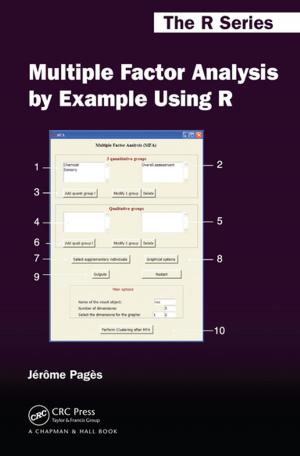Electronically Scanned Arrays MATLAB® Modeling and Simulation
Nonfiction, Science & Nature, Technology, Microwaves, Electricity, Engineering| Author: | ISBN: | 9781351833028 | |
| Publisher: | CRC Press | Publication: | December 19, 2017 |
| Imprint: | CRC Press | Language: | English |
| Author: | |
| ISBN: | 9781351833028 |
| Publisher: | CRC Press |
| Publication: | December 19, 2017 |
| Imprint: | CRC Press |
| Language: | English |
"[Contains] more lengthy mathematical derivations than most {comparable books] … for arrays, provides for a unique, stand-alone mathematical description that can be adopted by anyone trying to communicate the theoretical foundation for their array design…has insights from a practitioner that are unique. The MATLAB® scripts alone are worth the price."
—Daniel C. Ross, Ph. D, Northrop Grumman Corporation
**Electronically Scanned Arrays: MATLAB® Modeling and Simulation is considered the first book to provide comprehensive modeling/simulation programs used to design and analyze Electronically Scanned Arrays (ESA), a key technology internationally in the scientific and engineering communities.
Several books have been written about ESAs, but most cover only fundamental theory. Few, if any, provide the insightful, easy-to-use simulation tools found in this book. Obviously, MATLAB® is one of the greatest tools available for exploring and understanding science and engineering concepts, and we use MATLAB functions to easily and instantly calculate ESA patterns. However, to achieve a truly insightful and in-depth analysis of subarray architectures, conformal arrays, etc., it is imperative that users first develop a firm grasp of ESA fundamentals.**
Covers largely unexplored topics, such as reliability aspects and the application of ESAs in space
This volume helps readers build that elemental understanding of how ESAs work. It also provides code to run as an aid, so that readers don’t have to start from scratch. The book expands on ESA principles and provides a modeling framework, using MATLABto model applications of ESAs (i.e. pattern optimization, space-based applications, and reliability analysis). Presented code serves as an excellent vehicle to help readers master the analysis and simulation of ESAs.
Exploring how difficult problems can be simplified with short, elegant solutions, this is an invaluable resource for students and others new to ESAs, as well as experienced practicing engineers who model ESAs at the systems level.
"[Contains] more lengthy mathematical derivations than most {comparable books] … for arrays, provides for a unique, stand-alone mathematical description that can be adopted by anyone trying to communicate the theoretical foundation for their array design…has insights from a practitioner that are unique. The MATLAB® scripts alone are worth the price."
—Daniel C. Ross, Ph. D, Northrop Grumman Corporation
**Electronically Scanned Arrays: MATLAB® Modeling and Simulation is considered the first book to provide comprehensive modeling/simulation programs used to design and analyze Electronically Scanned Arrays (ESA), a key technology internationally in the scientific and engineering communities.
Several books have been written about ESAs, but most cover only fundamental theory. Few, if any, provide the insightful, easy-to-use simulation tools found in this book. Obviously, MATLAB® is one of the greatest tools available for exploring and understanding science and engineering concepts, and we use MATLAB functions to easily and instantly calculate ESA patterns. However, to achieve a truly insightful and in-depth analysis of subarray architectures, conformal arrays, etc., it is imperative that users first develop a firm grasp of ESA fundamentals.**
Covers largely unexplored topics, such as reliability aspects and the application of ESAs in space
This volume helps readers build that elemental understanding of how ESAs work. It also provides code to run as an aid, so that readers don’t have to start from scratch. The book expands on ESA principles and provides a modeling framework, using MATLABto model applications of ESAs (i.e. pattern optimization, space-based applications, and reliability analysis). Presented code serves as an excellent vehicle to help readers master the analysis and simulation of ESAs.
Exploring how difficult problems can be simplified with short, elegant solutions, this is an invaluable resource for students and others new to ESAs, as well as experienced practicing engineers who model ESAs at the systems level.















